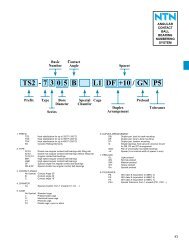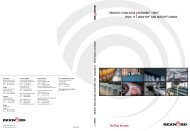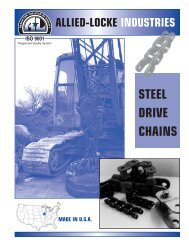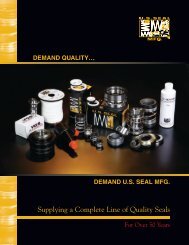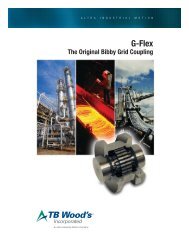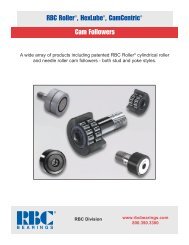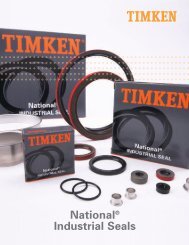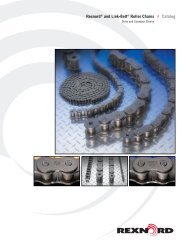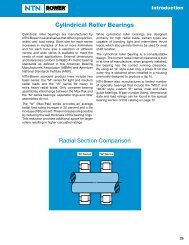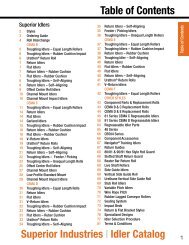APG Hydraulic Seals Catalog
APG Hydraulic Seals Catalog
APG Hydraulic Seals Catalog
You also want an ePaper? Increase the reach of your titles
YUMPU automatically turns print PDFs into web optimized ePapers that Google loves.
www.callapg.com 713-675-5271 FAX 713-675-2730<br />
1-800-888-5223 FAX 1-800-444-3252<br />
Piston <strong>Seals</strong><br />
Two-part seal requiring no lubrication. Piston design is simplified; and sticking, slipping, and breakaway problems are eliminated.<br />
Damage associated with cast iron or phenolic piston ring particles is eliminated as well as cylinder wall scoring.<br />
Provides bi-directional sealing. Easy installation and removal, and can be cut in the field for easier installation. Interence fit<br />
assures positive sealing. Conforms to out-of-round bore conditions. Pressures to 5000 psi. <strong>APG</strong> provides piston seals with<br />
70 Durometer Nitrile Expanders. Other compounds are available by special order.<br />
Square Piston <strong>Seals</strong><br />
Style TPS1400<br />
Square profile 15% glass filled PTFE with 70 Durometer Nitrile O-Ring (Expander)<br />
Rectangular Piston <strong>Seals</strong><br />
Style TPR1800<br />
Rectangular profile 15% glass filled PTFE with 70 Durometer Square Cut Ring (Expander)<br />
Piston Seal Installation Data<br />
1. Clean piston in solvent and dry. Inspect groove and end of piston for nicks or burrs which could damage the expanderor<br />
piston ring.<br />
2. Lubricate expander with a compatible lubricant for easier installation.<br />
Caution: Be sure expander is not twisted or distorted in groove.<br />
3. Install the piston ring over a 10° included angle mandrel onto the piston body and into the groove in a single motion<br />
as quickly as possible. Do not use pry bars, screwdrivers, knife blades, or any metal object to install piston rings<br />
- this will damage piston and seal.<br />
4. After installation of the piston ring, carefully guide the piston into the chamfered cylinder bore carefully (check bore first<br />
for burrs, sharp edges and foreign material). If bore is not chamfered, use a smooth, lubricated and tapered piston ring<br />
compressor to facilitate installation.<br />
5. To remove a worn piston ring, carefully cut through the PTFE piston ring and remove. Do not cut into the expander<br />
unless it is to be replaced also. Use care not to damage groove walls and create burrs or sharp edges.<br />
39




